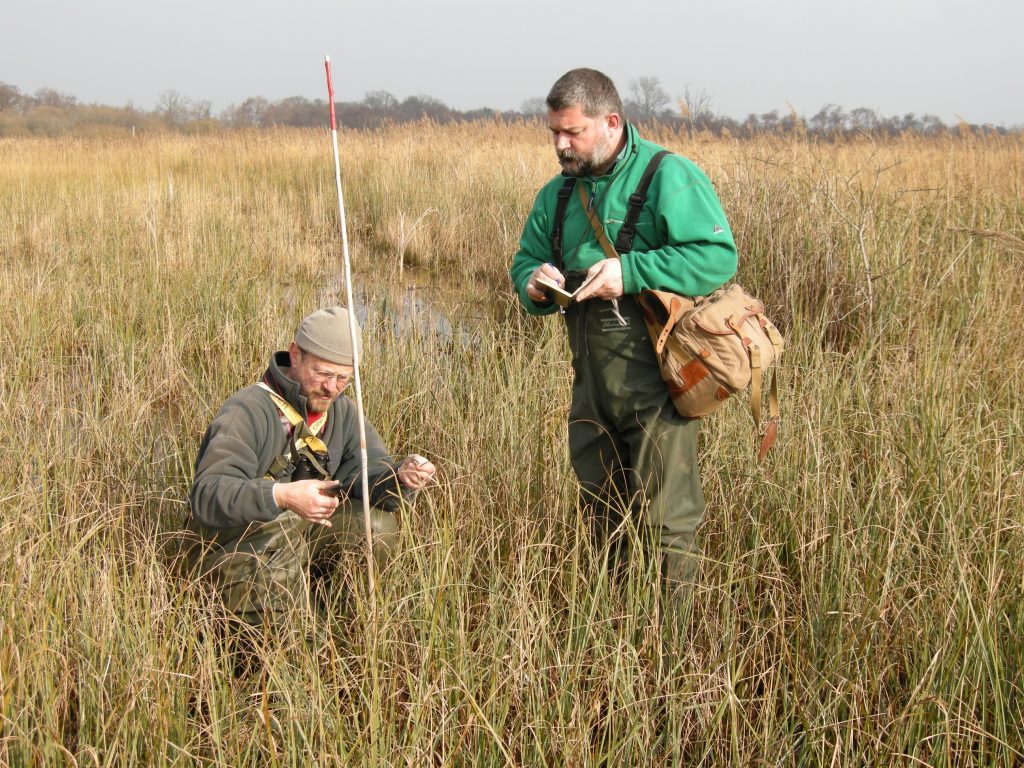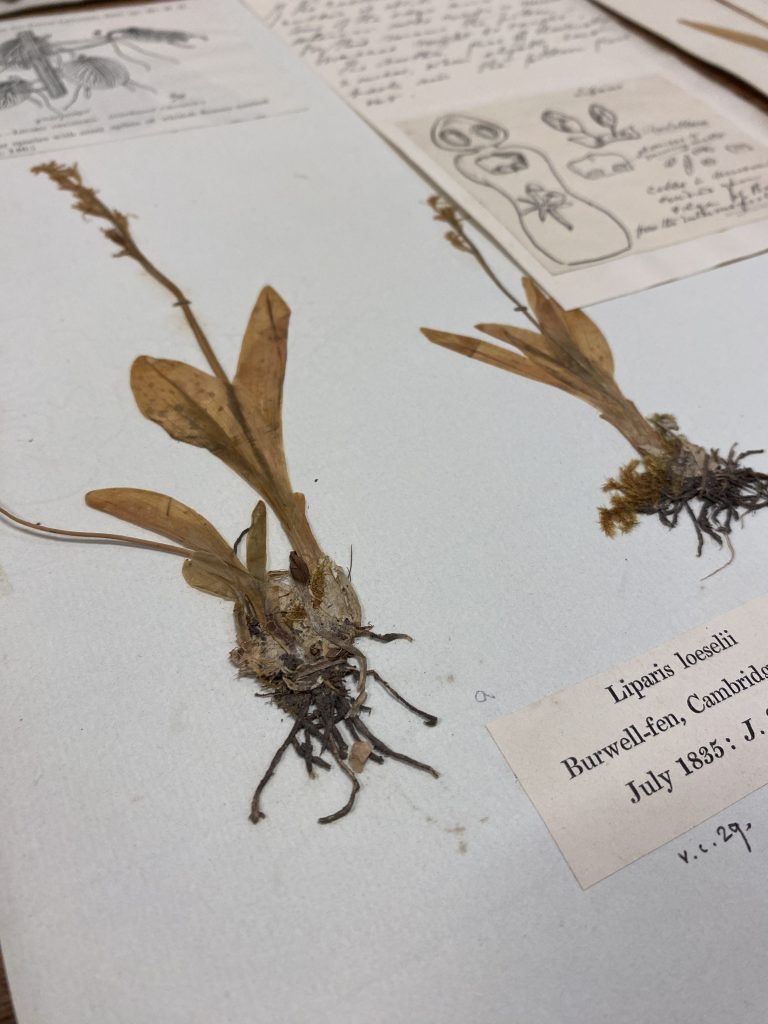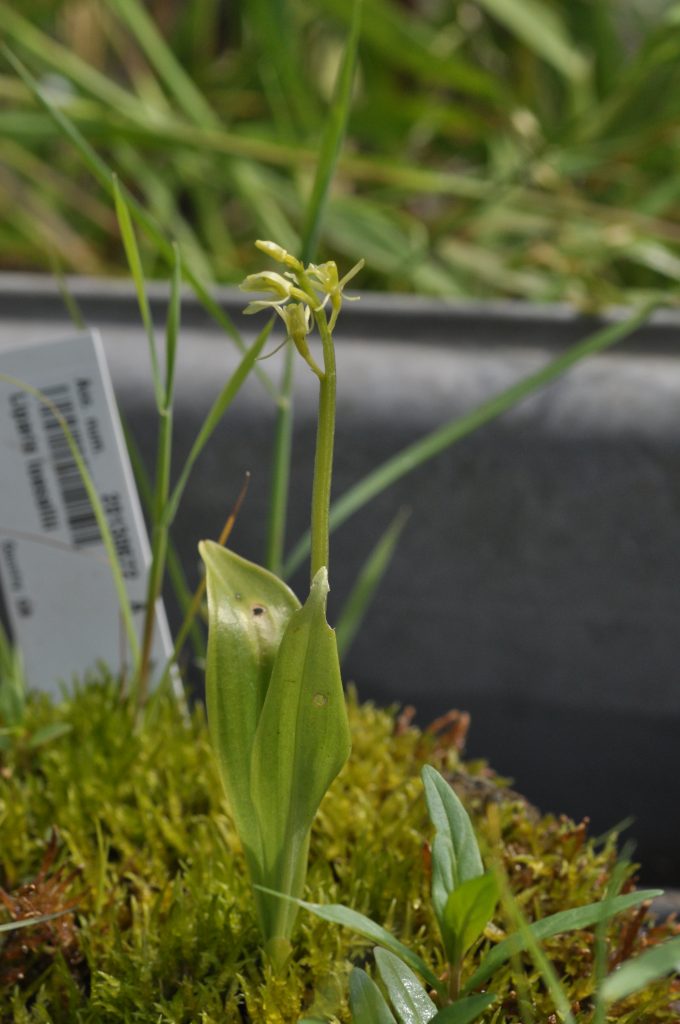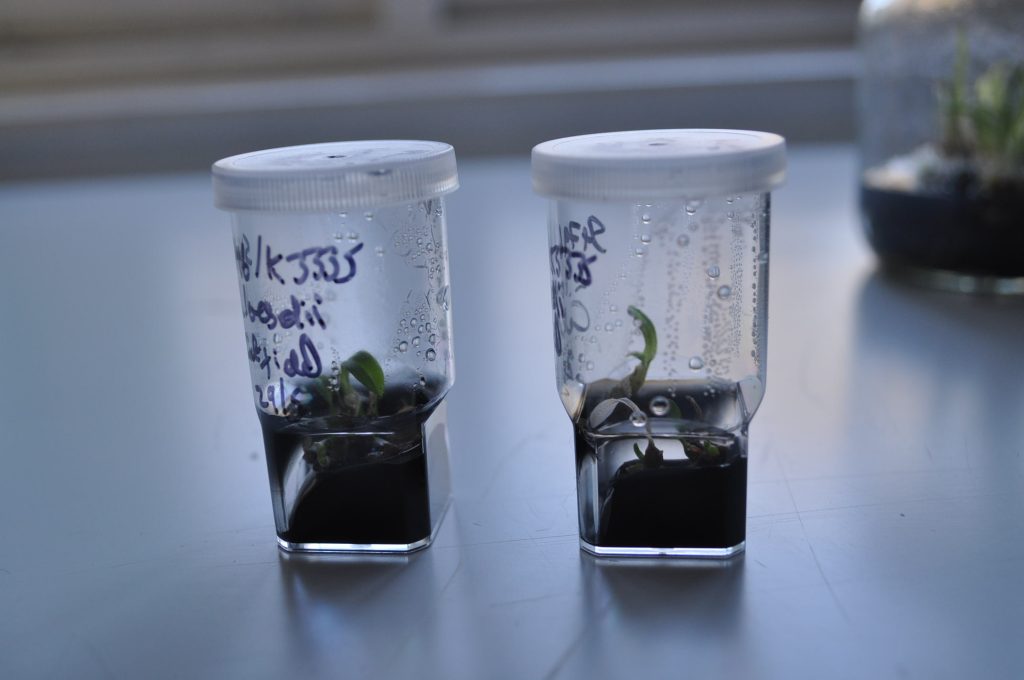The Fen Orchid Liparis loeselii – a rare wild orchid that flowers fleetingly in the fen – has been brought back from the brink of extinction thanks to the pioneering work of Plantlife botanists and conservation partners, including Cambridge University Botanic Garden (CUBG).
The Botanical Society of Britain and Ireland (BSBI)’s new GB Red List – which evaluates the status of our plant species – is published today for the first time in 20 years. Over a quarter of the plants on the list are now threatened with extinction. However, the report reveals that the Fen Orchid is now officially no longer considered ‘Threatened’ in Great Britain. The historic downgrading to ‘Near Threatened’ is thought to mark one of only a handful of plants that have been inched off the GB Red List due to conservation action since the system was introduced in 1977.
“As we face the enormous challenges of climate and biodiversity loss, this provides a moment of genuine hope for the future and is testament to what dedicated partnership conservation work delivered consistently over many decades can deliver.”
The news represents the culmination of decades of painstaking conservation efforts to better understand the plant’s ecology, safeguard existing plants and then boost populations.
CUBG has been a key partner in this long-term conservation project, working with charity Plantlife and Royal Botanic Gardens (RBG), Kew since 2008 to increase the number of Fen Orchids in the wild and reintroduce them to sites where they had disappeared.

Tim Pankhurst, former Conservation Manager at Plantlife, has dedicated his life’s work to protect Fen Orchids before retiring in April 2025. He says: “Playing a leading role in reducing the Threat status of such a beautiful yet mercurial orchid is a once in a lifetime opportunity for a botanist and one I will always treasure. As we face the enormous challenges of climate and biodiversity loss, this provides a moment of genuine hope for the future and is testament to what dedicated partnership conservation work delivered consistently over many decades can deliver.”
As one of the rarest orchids in Britain, the plant’s natural fenland habitat has been largely lost, leading to a dramatic decline in population size - falling to only a few hundred plants around a decade ago. Historically, the species was abundant across fenland areas such as Burwell Fen and Cherry Hinton, but habitat loss and changes in land management have significantly reduced its distribution.
Collaborative Conservation Work
Working under licence and in collaboration with organisations and landowners of three key Fen Orchid sites in Norfolk, CUBG’s team collected a small number of wild plants to propagate and cultivate at the Botanic Garden. This led to the establishment of a small ex-situ conservation collection at CUBG, serving as a backup to the remaining wild populations.
As far as is known, this is the first time the Fen Orchid has been successfully cultivated in Great Britain.
CUBG’s Plant Records Officer, Peter Atkinson, who has been involved in the project since it began says:
“At Cambridge University Botanic Garden, we’ve been investigating the life cycle of the Fen Orchid and successfully maintaining an ex-situ collection of plants for over a decade. Over this time, our field observations have deepened our understanding of the species, directly informing improved management of existing sites and helping wild populations increase from a few hundred to several thousand.”
Tim Pankhurst explains why this work has been so important: “The ex-situ conservation work at CUBG provided detailed observations on how, and over what time-scale, fen orchids respond to different growth conditions. It is not practical to make such observations in the field and the work of CUBG’s experts provided insight into critical aspects of the species’ ecology, shaping in particular the work to reintroduce the plant to its former locations.”

The primary focus of the project now is on monitoring the re-introduced populations and continued ongoing management of existing populations.
Tim continues: “You don’t achieve successes like this on your own. The single most important aspect of the fen orchid conservation programme has been the collaboration between all the partners, every organisation contributing something important and unique to the effort.”
Peter Stroh, Scientific Officer at the Botanical Society of Britain and Ireland, and lead author of the new GB Red List, said: “The positive revision to Fen Orchid’s threat status in Britain is excellent news, and is a result of targeted conservation actions arising from a combination of scientific research, ex situ and in situ experimentation, regular monitoring and the commitment and knowledge of ecologists from many different organisations, most notably Tim Pankhurst at Plantlife. However, it’s important to remember that Fen Orchid remains a conservation-dependent species. The challenge now is to ensure that Fen Orchid continues to thrive in its current locations and, either naturally or with a helping hand, flourish in former sites and new places within its native range in the coming years”.
This conservation story was featured on Channel 4 News on 4 November 2025, you can watch the programme here.

More About the Fen Orchid
The Fen Orchid grows among reeds and nestled in moss that retains moisture. Its seeds are minute and wind-dispersed, but germination depends on the presence of specific moss and fungal species – making both natural regeneration and artificial propagation extremely difficult.
Early attempts at RBG Kew to grow the orchids from seed showed initial promise but failed due to issues with the fungi used and the ability to grow on the young plants. CUBG later identified additional suitable fungi, but seed propagation remained unsuccessful. This led to a shift from seed propagation toward vegetative propagation in cultivation.
Habitat loss through drainage and abandonment of fens has been the primary cause of decline, compounded by past collection by orchid enthusiasts. By 2010, the Fen Orchid was found at only three sites in East Anglia and one in Kenfig, Wales, with fewer than 1,000 plants remaining. Fears were it would entirely disappear from the British landscape, especially as it is a sensitive species that requires quite particular conditions including damp alkaline soils and bare ground.
Since 2008, Plantlife and its partners have led a multi-pronged conservation strategy. Decades of habitat restoration by the Wildlife Trusts laid the groundwork for successful reintroductions. Today, Fen Orchids grow at seven sites in England and three in Wales, with the UK population exceeding 10,000 individuals.
Despite this success, the species remains in steep decline across Europe. Continued management is essential to safeguard its future.







